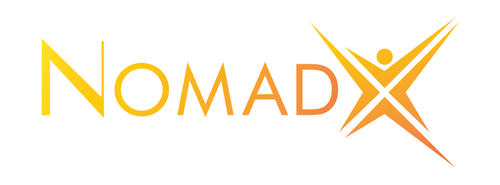How Smart Nomads Cut Flight Costs by 50% (Yes, Really)
Flights are still one of the biggest headaches for any digital nomad. Prices can swing wildly, and unless you have an endless stash of points or flexible dates, a simple one-way can blow up your budget faster than a Friday night in Bali.
But here’s something veteran nomads have quietly perfected: instead of always paying for pricey direct flights, they break the trip into two parts — flying the cheap leg first, then connecting by train or bus for the final stretch. Done right, this hybrid route can slash travel costs by up to half — and unlock a more relaxed, productive travel day, too.
If you’re still booking the same direct routes everyone else is, read on. This guide lays out exactly how to make this strategy work for you.
Why the flight + train hack works
Direct flights are convenient — and airlines know it. They price routes to capture that value, especially between major capitals and popular remote work hubs. But many destinations are well connected by affordable train or coach lines once you get within striking distance.
Take Europe, for example: thanks to extensive high-speed rail and bus networks, it’s often cheaper — and sometimes even faster — to fly into a nearby city and hop on a train for the last leg. And you’re not limited to Europe — parts of Asia and even North America have regional train and coach options that make this possible, too.
Real example: Lisbon to Berlin
In peak summer, a direct return flight Lisbon–Berlin can easily run €180–250.
But if you fly Lisbon–Frankfurt return with a budget carrier like Ryanair or easyJet (often under €80–100) and then take a Flixbus or Deutsche Bahn train to Berlin (€20–40 each way), you can save 30–50% and still get there in good time.
That’s not pocket change — that’s a week of coworking, or three dinners out in your new city.
Trains aren’t just cheaper — they’re better for work
There’s an unexpected bonus to this hybrid approach: trains can be some of the best places for remote work. Many nomads I know swear they get their best writing done rolling through the countryside.
Think about it: you have a decent-sized table, a power outlet, relatively stable WiFi on many routes, and big windows looking out at forests, farms, or dramatic coastlines. No turbulence, no seatbelt sign, no interruptions. It’s the closest thing to a mobile coworking pod.
I personally love to write from trains. The steady hum, soft conversations, and shifting landscapes help me focus in a way a crowded airport lounge never does. And when you arrive, you’re usually downtown — not 40km outside the city, like many budget airports.
The tools you need
You don’t need a spreadsheet to make this work — just a few tabs open and a bit of flexibility.
Google Flights: Best for scanning mainline routes to see the baseline fare.
Skyscanner and Kiwi: Good for multi-city options and budget carrier combos.
Omio or Trainline EU: Essential for finding train and coach options, often with mobile tickets.
Rome2Rio: Great for mapping unusual connections you might not think of.
Busbud: Helpful for coach options in North America or Latin America.
Planning your combo: things to watch for
Check the transfer airport
Some budget airports are misleading. Frankfurt Hahn is not Frankfurt International — it’s 120km away. Paris Beauvais is the same story. Always Google the distance to the city or main train station.
Leave a buffer
Low-cost flights can be delayed. Build in a few hours between landing and your next leg, or make the train ticket flexible if you can.
Travel light
This strategy works best with carry-on only. Lugging giant checked bags through metro stations or onto regional trains can kill the vibe fast.
Think like a local
Sometimes it’s worth staying overnight in your “connector” city. Why not grab dinner in Frankfurt or Milan before continuing on? You’re seeing more of the region and breaking up a long travel day.
Sweet spots: when this works best
Europe: The classic place for this hack. Spain, France, Germany, Italy — all have high-speed trains that are comfortable, reliable, and scenic.
Southeast Asia: In Thailand and Vietnam, local trains can be a charming, dirt-cheap way to finish your route. Some nomads even take overnight sleeper trains and save on accommodation.
North America: Limited, but not impossible. Amtrak routes in the northeast corridor (like New York–Boston) or Mexico’s new Maya Train are good examples.
Turning dead time into bonus time
A direct flight with a layover can feel like wasted time. But a train ride with good WiFi and an inspiring view? That’s a few hours of deep work — or a chance to dream up your next destination.
One UK-based freelance developer told me she uses train legs to work on her side hustle because it feels like bonus time she wouldn’t have blocked out at home. Another writer friend says every time he takes a slow regional train through northern Italy, he writes more pages than he would in a week at his usual coworking space.
Common mistakes to avoid
Don’t forget your phone charger and adaptors. Many older trains have few outlets.
Avoid last trains of the day unless you’re 100% certain about your flight landing time.
Always check if you need to reserve a seat in advance. Popular routes can sell out, especially on weekends.
The bottom line
Not every trip needs to be split — sometimes direct really is best. But the more you travel, the more it pays to master little hybrid strategies like this. Combining budget flights with local trains or buses won’t just save you money — it can turn your travel days into surprisingly productive (and scenic) parts of your nomad life.
So next time you’re staring at a €400 direct flight, pause. Try a new route. Save €200 and spend it on great coffee, a yoga class by the beach, or a local coworking membership. That’s the freedom we’re all here for.
Want more of these practical nomad hacks?
Check out our full library of remote work and travel guides on the NomadX Blog.
Follow us on Instagram for daily local tips and inspiration.
And if you haven’t yet, grab our free weekly Nomad Secrets newsletter — your smarter travel life starts here.


